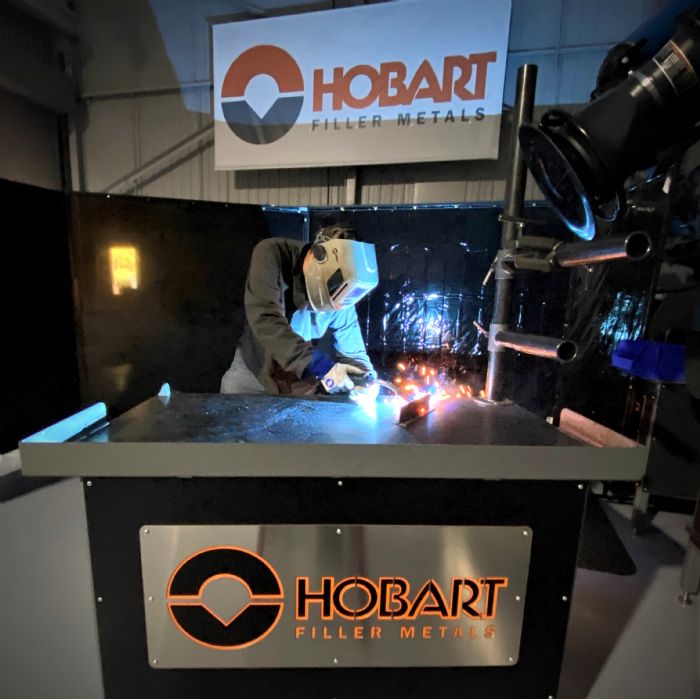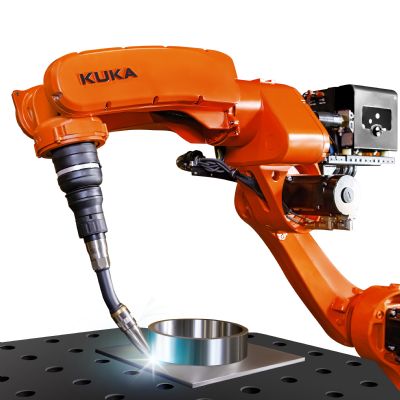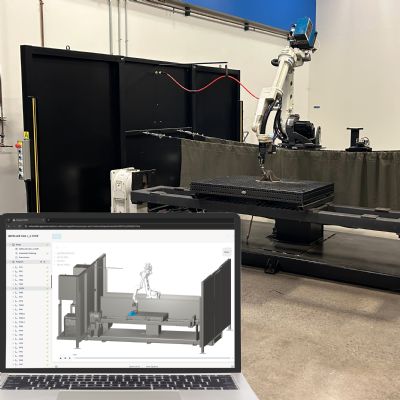Common Mistakes and Consequences
Improper heat input ranks among the biggest culprits when problems arise in welding thin materials. High heat input can be caused by an excessive voltage or amperage setting, inadequate travel speed, and needlessly long welds—each can lead to burnthrough. Distortion, which occurs when the material expands and contracts as a result of welding and subsequent cooling, may be amplified by high heat input. Distortion creates issues such as poor fitup between joints that may lead to downtime for rework.
Setting the voltage and amperage too low reduces heat input but can cause a ropey weld-bead appearance. It also can lead to lack of penetration and, potentially, spatter. Conversely, setting the voltage too high may lead to undercut and a concave weld-bead shape.
Given all of these potential pitfalls, be sure to employ welding parameters that can balance heat to gain the best weld quality.
Best Practices
Best practice when welding any type or thickness of material includes referencing weld-procedure specifications (WPS) when available—thin-material welding is no exception. These documents can provide the welding parameters necessary to complete a weld correctly and consistently for a given application and joint design. A WPS offers the recommended operating window—or maximum and minimum voltage and amperage settings—that will help yield the best results.
Also recommended: consulting the product datasheet for the filler metal being used. This sheet provides key information, such as the best welding positions for the filler metal, shielding-gas options, welding current, and optimal voltage and wire-feed speed ranges for a given wire diameter.
Well-suited for welding thin materials: a combination of small-diameter solid welding wires—0.024-, 0.030- and 0.035-in.-dia.—with a power source offering a short-circuit transfer mode. Small-diameter wires prove ideal as they do not require as much amperage and voltage to melt off the wire into the molten weld pool. The same holds true for the short-circuit transfer mode. It operates at lower welding parameters, specifically wire-feed speeds and voltages, than other modes of transfer. Together, these factors keep heat input low. Short-circuit transfer, though slower than other methods, offers versatility as it allows welders to work in all positions when using solid wires, with or without pulsed waveforms.
Welding parameters vary for each of the recommended wire diameters and also depend on material thickness. For example, 0.024- and 0.30-in.-dia. solid wires can be used to weld 24-gauge material using a welding current of 30 to 50 A and travel speeds of 10 to 20 in./min. However, voltage and wire-feed speed vary. A 0.024-in.-dia. wire would operate at 13 to 15 V (electrode positive) with a wire-feed speed of 130 to 160 in./min., whereas a 0.30-in.-dia. solid wire would require 15 to 17 V and 75 to 100 in./min. wire-feed speed. These parameters would work well for single-pass flat and horizontal fillet welds.
The wire diameter used necessarily will increase as the material thickness increases. The same holds true for the welding parameters, which will run hotter. For instance, a 3⁄16-in.-thick piece of material could be welded with a 0.035-in.-dia. solid wire at 140 to 175 A and 19 to 22 V. Recommended wire-feed speed would range from 240 to 290 in./min. with travel speeds between 14 and 19 in./min.
A good rule of thumb: Keep the welding-wire stickout at 5⁄8 in. or shorter for small-diameter wires. This helps control amperage, heat input and more. Excessive stickout lowers the amperage, which reduces penetration but fights against the voltage setting used. This prevents the weld from adequately wetting out and filling the toes of the weld. Poor weld-bead wetting leads to quality issues such as cold lap. A long stickout also can prevent proper shielding-gas coverage, causing contaminated welds and rework.
Regardless of the diameter of solid wire used in conjunction with a short-circuit process, the shielding-gas recommendations remain the same. Using a mixture of 75 Ar-25 CO2 is common. Some welding operations may opt for a mixture of 90 Ar-10 CO2 for spray-transfer or pulsed-spray-transfer welding applications, along with short-circuit applications. This allows for standardizing on one shielding-gas mixture. When using higher levels of argon in a short-circuit application, the welding operator should lower voltage settings as this gas runs hot and can increase heat input.
Don’t Be Intimidated
…by the idea of welding thin materials. Following a WPS and filler-metal spec sheets form a good basis for success. Welding operators newer to the process or those who don’t weld on a regular basis may require additional time to tune in the welding parameters and techniques. Remember to consult with trusted welding distributors, filler-metal manufacturers or equipment manufacturers with any questions about welding thin materials. They often have dedicated personnel who can help. MF
View Glossary of Metalforming Terms
See also: Hobart Brothers Co.
Technologies: Welding and Joining







 Thinner materials, in particular, pose unique challenges. From the potential for distortion to the risk of burnthrough and more, mistakes can come easy. That’s why welders should have a solid understanding of proper welding parameters to ensure good weld quality and productivity.
Thinner materials, in particular, pose unique challenges. From the potential for distortion to the risk of burnthrough and more, mistakes can come easy. That’s why welders should have a solid understanding of proper welding parameters to ensure good weld quality and productivity. 

